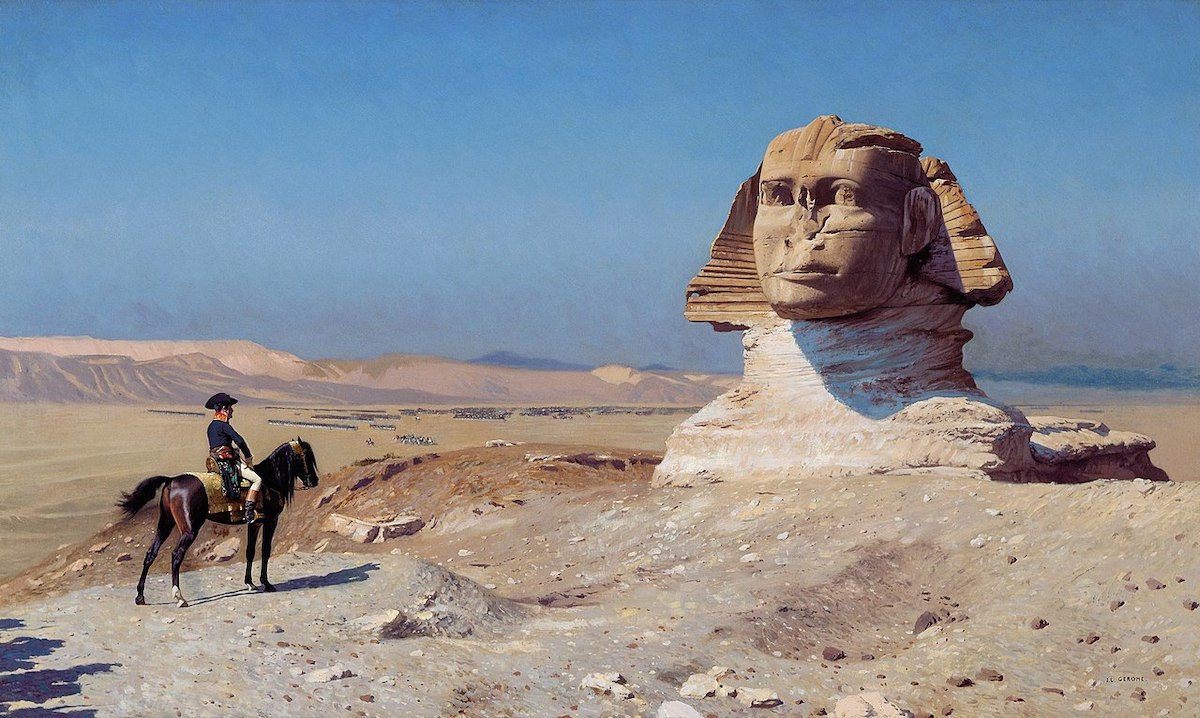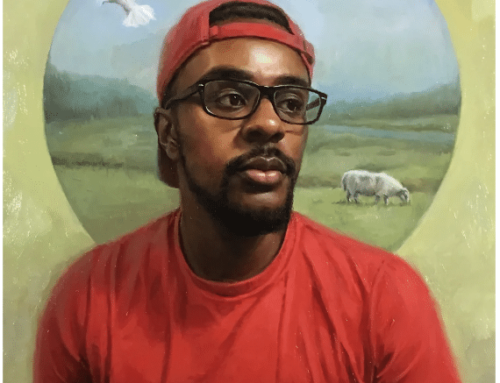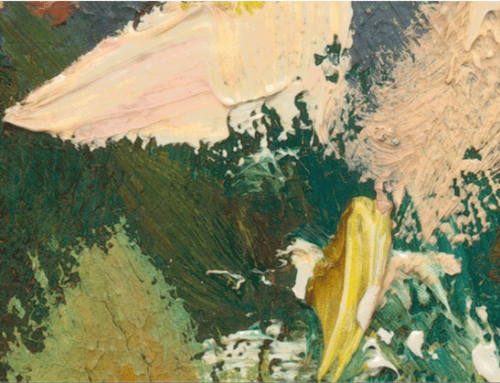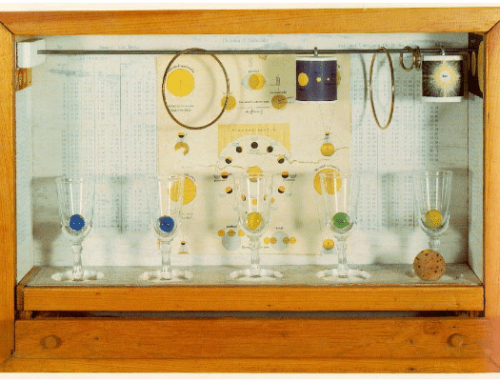Ancient Egypt!
European painters in the 18th and 19th centuries became fascinated by the unearthing of ruined civilizations and especially by the excavations of ancient Egypt. Artists found themselves under the spell of that culture’s extreme antiquity and the magnificent scale and mysticism of its art and architecture.
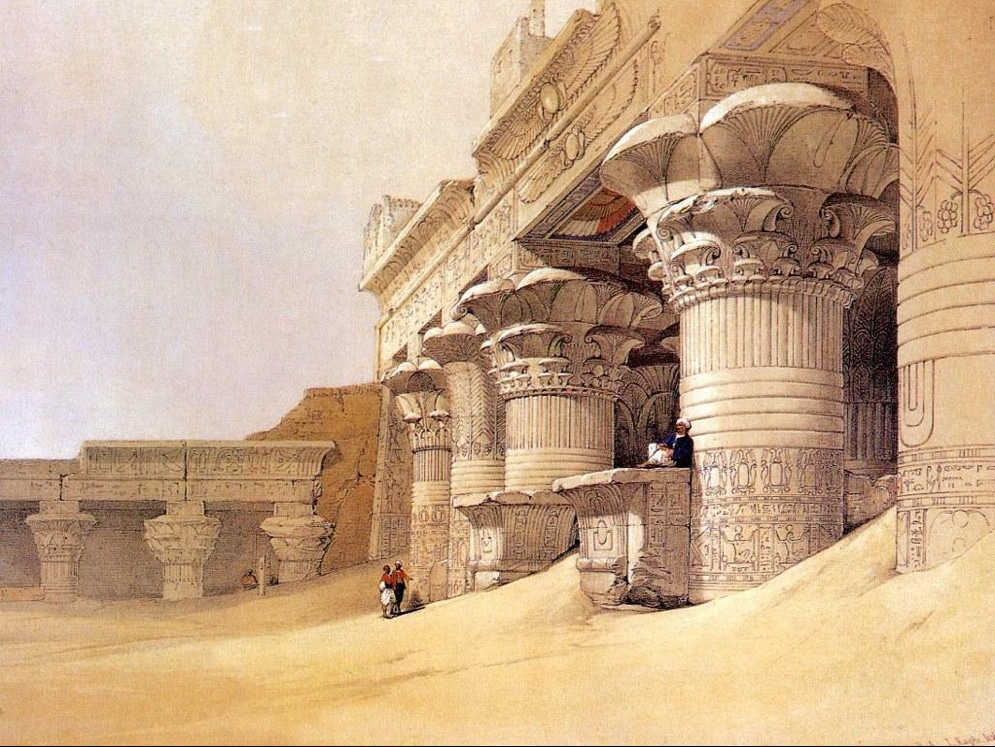
Outer Court of the Temple of Edfu by 19th C Scottish painter David Roberts, who toured Egypt and the Near East with his watercolors, copying the ruins just emerging from Egypt’s sand.
Desert legend once maintained that anyone who spent the night of a full moon asleep near the sphinx would dream prophetic dreams.
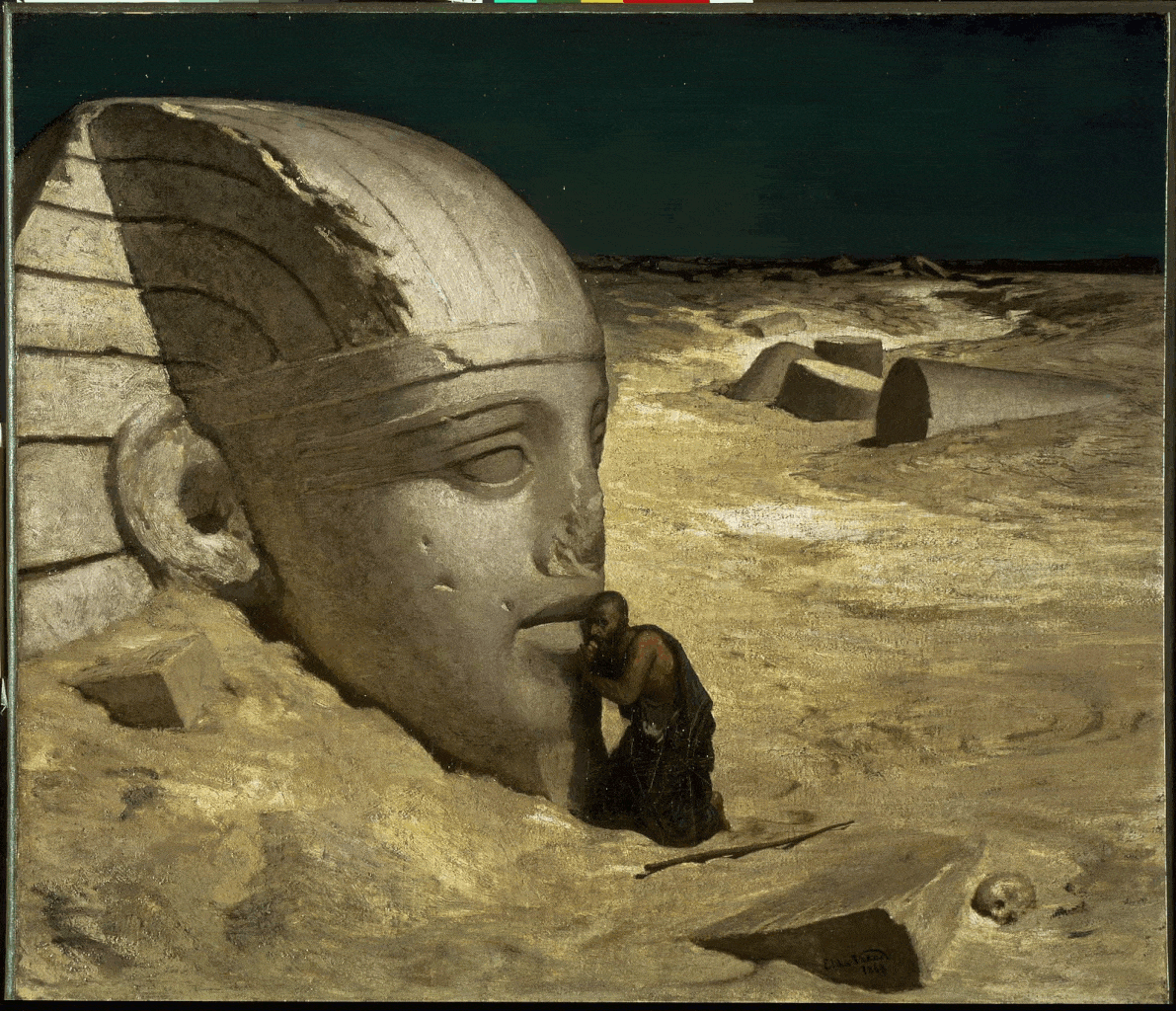
Elihu Vedder, The Questioner of the Sphinx, 1863, MFA Boston
American painter Elihu Vedder painted an image of a man kneeling in the desert sands before a buried sphinx’s mouth, ear pressed to the unmoving lips. Near him lie ruined columns and a skull half buried in sand. This is humanity vainly in search of the answer to the riddle of existence, an answer not likely to come anytime soon (Vedder made another version, an etching, in 1890 titled “The Secret of the Sphinx”)
Writers, too, fell under the enchantment. Romantic poet Percy Bysshe Shelley’s poem Ozymandias finds a timeless lesson in humility in the “colossal Wreck” of a fallen monument to a forgotten desert king:
OZYMANDIAS.
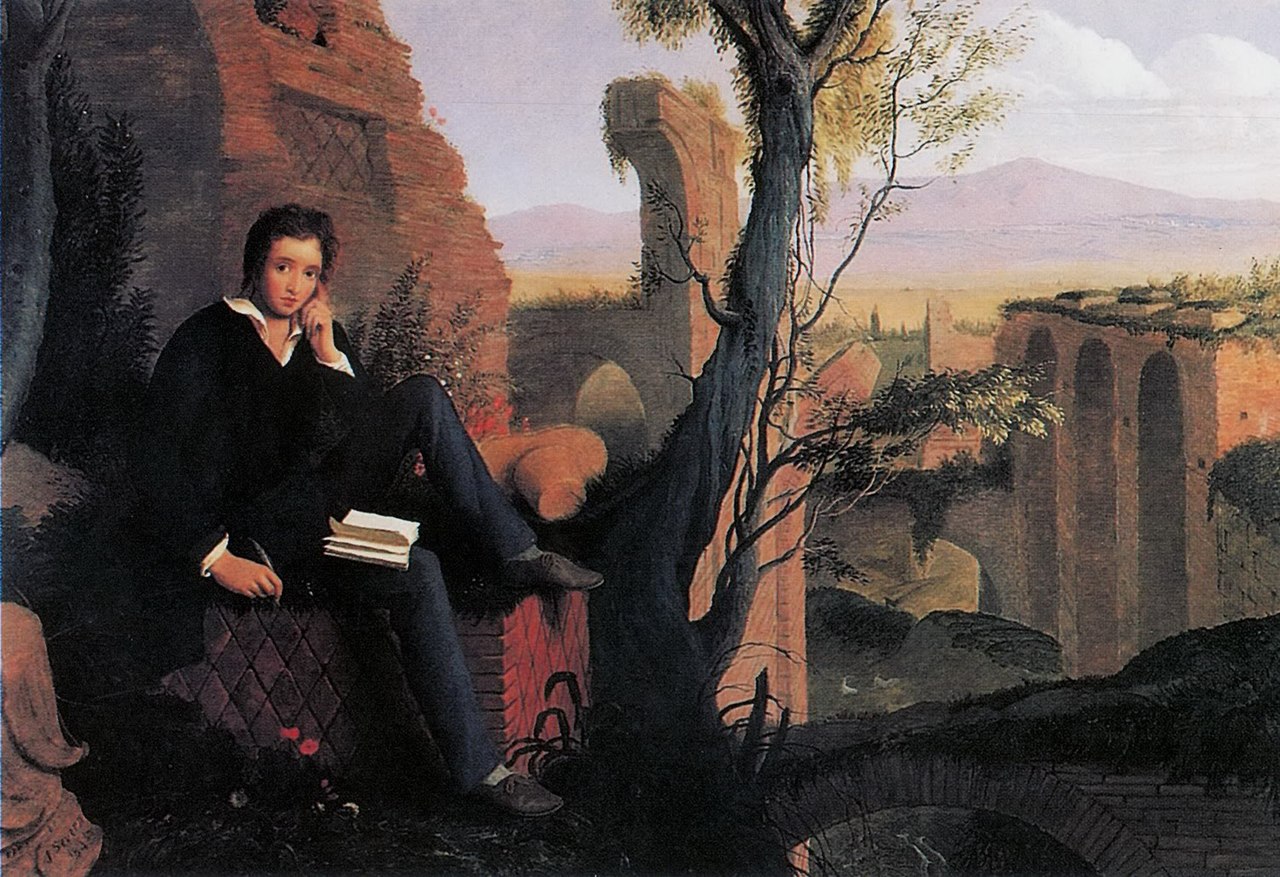
The nightingale amid the ruins: Joseph Severn, Posthumous Portrait of Shelley, 1845 {{PD-US}}
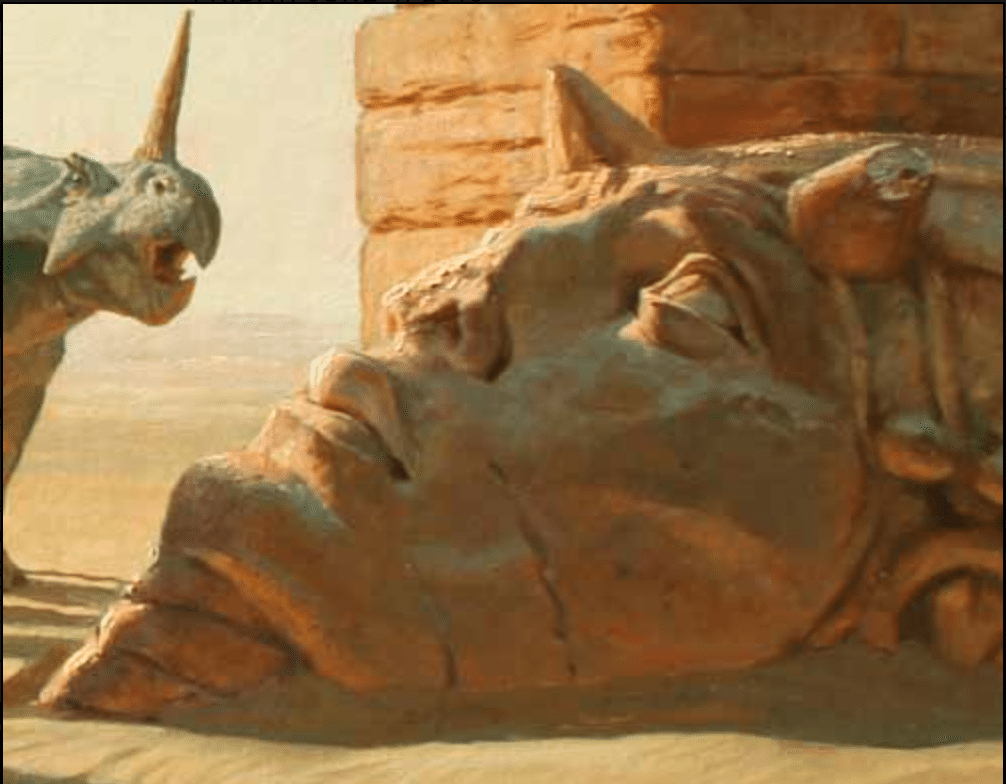
James Guerney’s Ozymandias painting on the cover of Dinotopia: Journey to Chandara
‘Haunted Painting’ for Sale on eBay

The “extremely old haunted oil painting” currently available on eBay
An “extremely old haunted oil painting” of what appears to be a “a very evil” Belgian Navy cadet is currently being sold on eBay for $9,800.
According to the seller, an eBay user who noticed the listing believes it to be a portrait to of his “great great grandfather, Martin Von Euw.” Von Euw enlisted in the Navy at 15, according to the unnamed eBay user purportedly quoted in the listing, and died of a gunshot wound to the head at the age of 28. “He wasn’t liked by anyone in our family. I had heard he was a really bad person.”
As for whether the painting is really haunted or not, the seller has only this to say: “Pictures speak a thousand words… the most unique piece of art I have ever known. From my personal collection.”
The supposed green great grandson of the “really bad person” in the picture expressed surprise at seeing “another painting” of his sire surface online:
“I’m a bit shocked you have this but happy someone has him safe in a home,” wrote the User. “I hope someone buys him and gives him a home because he was a very evil man whilst he was alive. Be careful please. Peace be with you.”
Keep in mind, $9,800 is only $437 a month for 24 months with PayPal Credit.
– Chris

